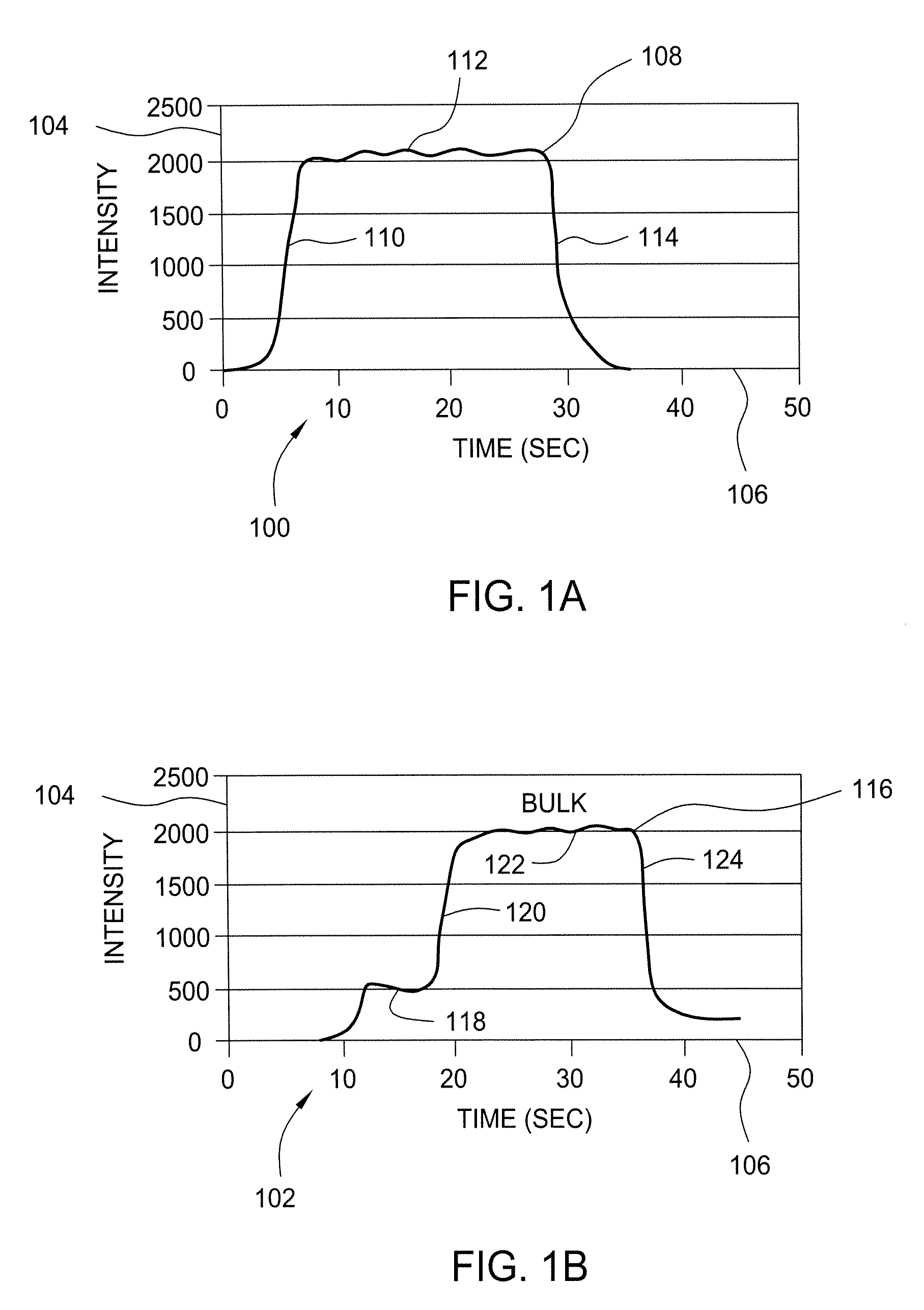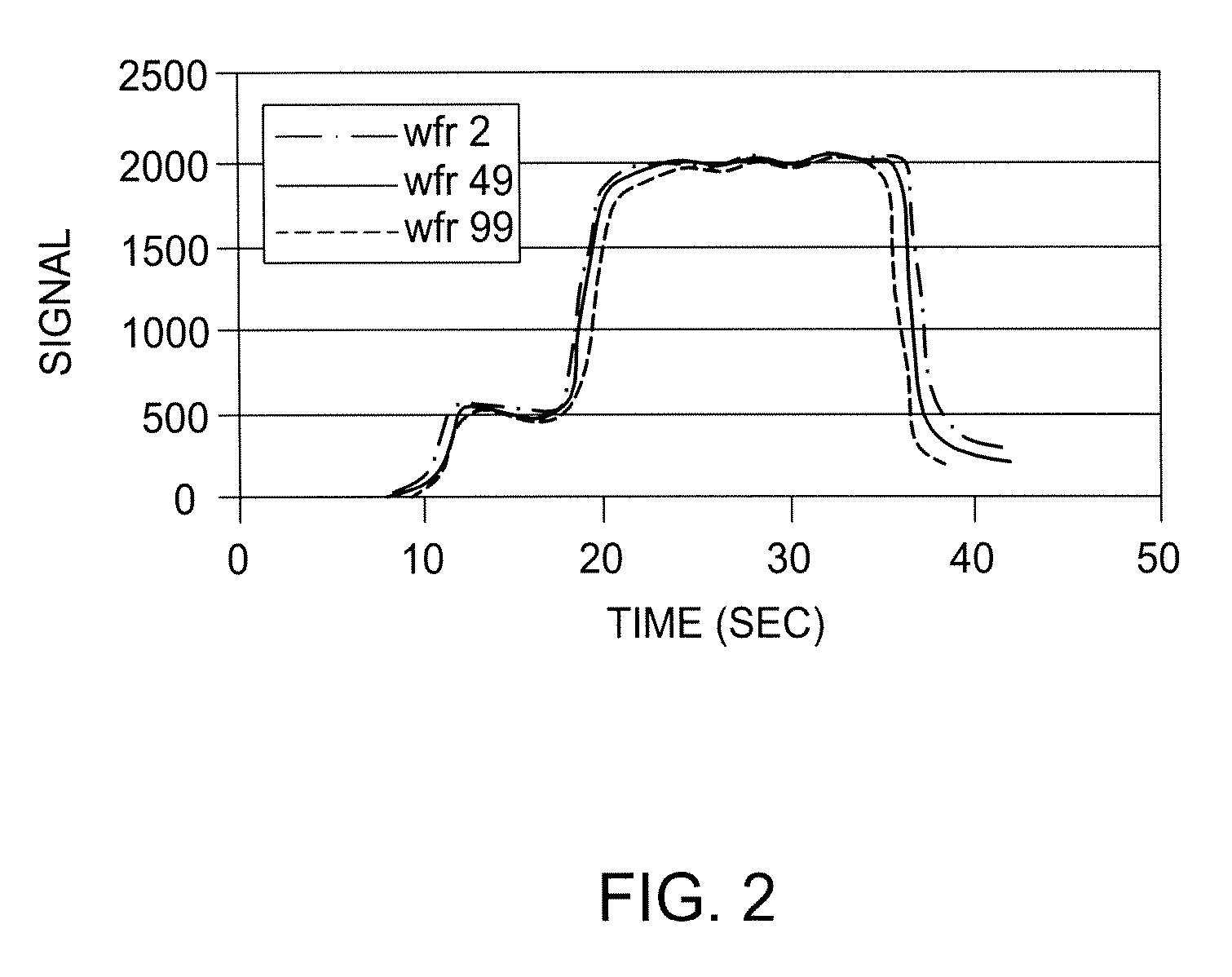Method and apparatus for performing hydrogen optical emission endpoint detection for photoresist strip and residue removal
a photoresist strip and endpoint detection technology, applied in the direction of fluid pressure measurement, instruments, vacuum gauges, etc., can solve the problems of non-uniform vertical removal (stripping) of the photoresist strip, non-uniform removal, and substantial post-implant residue remaining on the substra
- Summary
- Abstract
- Description
- Claims
- Application Information
AI Technical Summary
Benefits of technology
Problems solved by technology
Method used
Image
Examples
Embodiment Construction
[0018] The invention relates to a method for monitoring and detecting optical emission endpoint(s), more particularly hydrogen emissions, for photoresist stripping and removal of residues from a substrate or a film stack on a substrate. In one embodiment of the invention, a method determines and uses a hydrogen optical emission peak for identifying an endpoint of a photoresist stripping process, including blanket and patterned photoresist, post-implant photoresist, and post-plasma etch photoresist. In addition, the invention comprises a method to use optical emission endpoint in general, and hydrogen peak specifically, to monitor the transition from crust removal to bulk photoresist removal for post-implant stripping. By this method, the hydrogen endpoint trace is a more direct measure of stripping for patterned implant substrates (compared to other peaks such as oxygen).
[0019] The present invention uses, in one embodiment, the hydrogen optical emission peak at 656 nm to monitor en...
PUM
| Property | Measurement | Unit |
|---|---|---|
| wavelength | aaaaa | aaaaa |
| wavelength | aaaaa | aaaaa |
| temperature | aaaaa | aaaaa |
Abstract
Description
Claims
Application Information
 Login to View More
Login to View More - R&D
- Intellectual Property
- Life Sciences
- Materials
- Tech Scout
- Unparalleled Data Quality
- Higher Quality Content
- 60% Fewer Hallucinations
Browse by: Latest US Patents, China's latest patents, Technical Efficacy Thesaurus, Application Domain, Technology Topic, Popular Technical Reports.
© 2025 PatSnap. All rights reserved.Legal|Privacy policy|Modern Slavery Act Transparency Statement|Sitemap|About US| Contact US: help@patsnap.com



